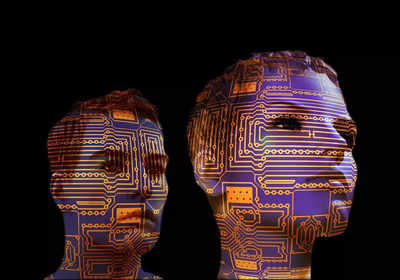
Deepfake videos pose challenges as they convincingly depict individuals saying or doing things they never did. Indian celebrities, politicians targeted. Concerns raised about misuse for disinformation, character defamation. Efforts to combat include advanced detection tools, public awareness, and stricter rules under IT Act.
Deepfake videos
pose significant
challenges
as they can convincingly depict individuals saying or doing things they never did. A lot of Indian celebrities, politicians have been targeted with deepfake videos and the most recent one was former cricketer
Sachin Tendulkar
. This has raised concerns about their potential misuse for disinformation, character defamation, or other malicious activities. As the technology evolves, the authenticity and believability of deepfake videos continue to improve, making it increasingly difficult to discern between genuine and manipulated content.
Efforts to combat the negative impact of deepfakes include the development of advanced detection tools, increased public awareness, and the exploration of regulatory measures. IT minister
Rajeev Chandrasekhar
said in a post on social media platform that the
government
is readying stricter
rules
to
fight
deepfakes. “We will be shortly notifying tighter rules under IT Act to ensure compliance by platforms,” said Chandrasekhar. He said that a recent advisory of the government of India requires platforms to comply with this 100%.”
Replying to the post where Tendulkar shared a deepfake video of his, Chandrasekhar said “#DeepFakes and misinformation powered by #AI are a threat to Safety&Trust of Indian users and represents harm & legal violation that platforms hv to prevent and take down.”
How are deepfake videos created?
Deepfake videos are a product of advanced artificial intelligence (AI) and machine learning technologies that involve the manipulation of audiovisual content to create hyper-realistic, often deceptive, simulations. The process begins with a deep neural network analyzing and learning from vast datasets of images and videos featuring a specific individual. Once trained, the AI can generate remarkably authentic-looking videos by seamlessly integrating the learned facial expressions, movements, and speech patterns onto a target subject. This technology has been particularly notorious for its application in placing a person's likeness into explicit or compromising situations, commonly in the context of adult content.












 English (US) ·
English (US) ·